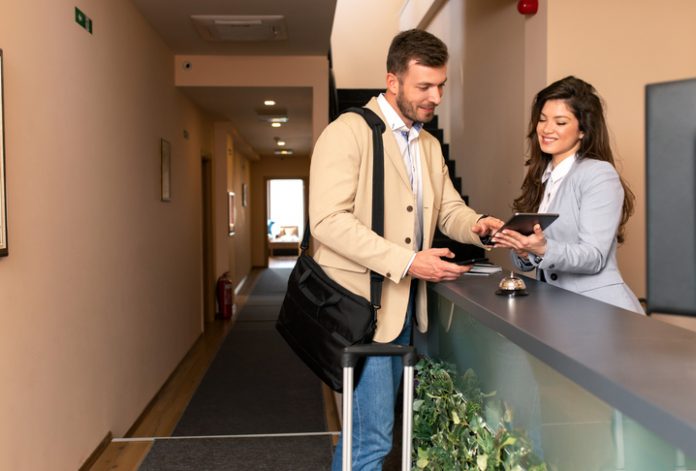While unpredictable for some time, the global business travel market is rebounding. This means there’s a light at the end of the tunnel for those who want, prefer, or need to travel for work. According to the Global Business Travel Association (GBTA), business travel spending worldwide will likely jump more than 38 percent this year and return to pre-pandemic levels in 2024, with revenues topping $1.48 trillion at that time. As the industry continues its rebound from pandemic travel restrictions, hoteliers around the world have an opportunity to evaluate their technology processes and determine how to support updated business traveler preferences. Since the shift to remote work has made consumers and businesspeople more digitally advanced, corporate hotel guests have higher expectations for seamless, tech-enabled options.
This digital transformation begins with addressing hotels’ dated property management systems (PMS). Often compared to banks, hotels tend to have older infrastructure, operate on-premises versus on-cloud, and have been heavily disrupted by online aggregators. In the case of hotels, this would include direct bookings through online travel agencies (OTAs) that specialize in the selling of travel products such as flights, accommodations, and rental cars.
When looking at two prevalent pain points in the industry today, such as staffing shortages and lagging average occupancy rates (AOR), taking steps toward digital transformation will help future-proof hoteliers’ business strategies and set them apart from the competition. Beginning at the time of booking and right until the moment a guest checks out, a critical component of the guests’ user experience is payment. So, what can hotels do differently for their corporate guests?
The short answer is making the payment process more seamless and invisible. Here’s a more detailed look at four ways hotels can make corporate travel more flexible—for both business travelers and hotels themselves—through consolidated, direct billing.
- Offer an invisible invoicing option. Right now, this process is laborious for the corporate traveler and for their employer to manage business accommodation receipts. For example, many hotels’ corporate clients distribute and manage travel and expense (T&E) cards to traveling employees who then need to consolidate and categorize expenses with their team. In other instances, business travelers must use their personal credit cards to pay for hotel stays that then need to be expensed back to their employer—sometimes via a complex expense management system. To eliminate both methods, companies can direct their business travelers to stay at hotels that have a dedicated financial relationship with them. Without any need to present a physical card for reservation or payment, the traveler’s invoice can be automatically sent to their company for payment on-terms after their stay. In the payments industry, this can be referred to as an embedded payments solution.
- Alleviate manual invoice reconciliation. Manual invoicing is rife, error prone, and time consuming. By implementing a consolidated billing solution, hoteliers can leverage technology to take the administrative burden away from staff and increase the likelihood of job satisfaction. The system automatically consumes and aggregates corporate clients’ invoices that are then sent for payment. This frees up hotel staff’s time to focus on the important items that need a human touch.
- Build a direct relationship with corporate clients. Hotel chains can build a dedicated financial and expense management relationship through consolidated billing to increase corporate loyalty. Hoteliers can establish pre-negotiated rates with an external team to manage the risk of extending trade credit to their corporate clients. These corporations will be more likely to work with a participating hotel again in the future, which increases occupancy and revenue.
- Leverage data to better forecast. In the peak of pandemic travel restrictions, revenue forecasting became challenging. Knowing a dedicated relationship exists can help hotels better predict revenue. The ability for more advance forecasting could also translate to increased AOR and overall revenue by guaranteeing payment on time, every time from corporate guests and event bookings.
Hoteliers must acknowledge and adapt to changes in corporate guest experience, engagement and convenience preferences embraced by the rising digital generation and accelerated by COVID-19. To better attract time-strapped business travelers and alleviate companies from distributing and managing employee card programs, a direct billing system can be integrated into a hotel PMS to streamline the purchasing process and remove the need for antiquated paper invoices. Hotels that embrace digital transformation for their corporate clients will see increased loyalty from business travelers, their corporate clients, and the hotel staff.
About the Author
Brandon Spear is CEO of TreviPay.











